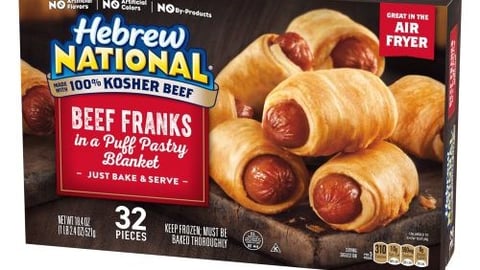How Topco Helps Regional Grocers Stay Competitive
Complete Topco Coverage
For the past 80 years, Topco has been serving the needs of regional grocers and their customers by allowing smaller chains to remain competitive in the face of growing competition from national powerhouses.
Today, the grocery cooperative is an $18.3 billion privately held company that touts itself as providing aggregation innovation and knowledge management solutions to its members, which include grocery retailers, wholesalers and foodservice companies. Topco can leverage the collective volume, knowledge and commitment of these companies to create a competitive advantage in the marketplace by reducing costs and offering winning business-building capabilities.
A big change in the company happened nearly a decade ago, when Topco launched its commitment initiative. By having members commit to buying certain levels of products from Topco, the company was able to work with product suppliers to obtain better pricing on a host of items.
As Topco celebrates its 80th anniversary, its president and CEO, Randy Skoda, spoke to Progressive Grocer's sister publication, Store Brands, about the company’s evolution and the growth opportunities that lie ahead.
Store Brands: As Topco turns 80, can you give us an overview of the company?
Randy Skoda: Topco has talked a lot about commitment. As we celebrate our 80th year, it’s important to understand how Topco operated for its first 70 years. We were strictly a voluntary cooperative, which meant that a grocery could buy whatever they wanted from us one day, and then the next day buy something different, or buy direct. Operating as a voluntary co-op, we had to sell each member individually and were not able to go to market as one.
[RELATED: Exclusive - The Nation’s Oldest Private Food Co-Op Looks Back and Ahead]
Topco for years was going to market with a lot of scale, but individual members make their own decisions about products and all have different specs. While we still serve voluntary members, the real benefits are for those members who have committed to Topco. The committed members say they are going to buy 95% of their store brands through Topco. This allows us to make decisions about products and have the power of the purchase order. That has been a game-changer, as we’ve become a much more strategic customer to our suppliers.
SB: The move toward having members commit, is that the main reason sales have jumped as high as they have in recent years?
RS: Those Topco-committed members have grown their volume through Topco by more than $8 billion. They saw value in pushing more chips to the middle of the table and allowing Topco to go to market on their behalf. But it’s a unique organization in that they partner together and leverage Topco to work on their behalf. I think many of our members would tell you they would not be around as regional retailers if they didn’t partner with each other. At the end of the day, Topco is a platform that is jointly owned by these retailers and wholesalers where they decide to partner together and execute through our platform.
SB: Are there certain members that drive a large percentage of Topco’s business?
RS: Our top 20 members account for a little less than 80% of our volume. We have 46 members in total currently, and 35 of those members are committed. Those committed members represent 91% of our business.
SB: How do you get the noncommitted members to change and become committed?
RS: The decision to become a committed member of Topco comes from the very senior level of each member. What happened over the years is there’s turnover in senior management. When a new CEO comes in, they may have never heard of Topco or understand why they need us. It’s an educational process. We have had instances where we have spoken with the new CEO, and once there was an understanding of our role, the CEO doubled down on our relationship with the given member. And when inflation hit the industry, we had some large voluntary members reach out to have deep discussions to find out what they were missing.
Quite frankly, the economy served to drive members who weren’t heavily engaged with us to become more engaged because they needed to find new ways to survive. We also get a greater benefit by bringing more scale to the organization. Even if our members have stores across the street from each other, they understand that by growing the co-op, they’re all going to win.
SB: It’s an interesting dynamic, since you could have members in one room who are also competitors, but it seems to work without any problem.
RS: We do take the competitive overlap very seriously in the sense of making sure we’re not discussing things that would run afoul of antitrust rules or anything else. When we’re sharing things in a group setting, we’ll separate our members by regions so there’s no overlap in conversations and our members can be confident that they are sharing information with others who are noncompetitive.
And you’re right in that we’ll have people sitting side by side carrying the same brands, but they have realized that the guy across the street is not the real competitor. The real competitors are Walmart, Kroger and Amazon. You know, if you think about Amazon, they are taking volume out of every one of these markets. The products just show up at someone’s house.
SB: With members across the country, how challenging is it to develop private label products that meet the needs of customers at each of those retailers?
RS: We have an incredibly strong insights team that uses national insights and regional insights to identify opportunities. We work to tap into emerging trends and make products available to all our members. But we also know the West Coast is different from the Midwest or East Coast. Our team does a really good job of developing products that target specific regions. We’re fortunate to have a diverse membership that allows us to do different things. We also represent store brands when talking to the category manager.
SB: When you look toward the future, where are the growth opportunities for Topco?
RS: One of the growth opportunities we have is how we do more with our existing members. National brands are one opportunity. While we’re doing some pilot programs, we buy next to nothing as it relates to national brands. If we could buy those products on behalf of our members, Topco could almost double our business without having to come up with one new product.
We also see foodservice as a big opportunity. Not only can we supply deli products and food such as chicken, but we can also supply the cooking oil needed by foodservice operations to prepare the food. When you look at most retailers, their foodservice and retail operations are completely different and they don’t buy their commodities together inside the store. For example, the retail side buys sugar and the foodservice side buys bulk sugar, but they don’t work to buy all that sugar together. We’re working through some of those things, and we think there’s big scale there.







